Finally Cartagena after 30'700 km
Finally Cartagena after 30'700 km
The drive north from Al Bosque Camping didn't go as I had imagined right from the start. I had had enough of dirt roads since NP Angel and wanted to spend my last few weeks on paved roads.
Maps.Me had other ideas. On my way to Otu, it took me through Guarne out of the mountains. After an hour, I was in Guarne and already fed up. After another 30 minutes I found myself in the hills outside San Vicente, driving the Dog.O.Mobil along narrow, winding, and crappy roads, I just wanted to stop somewhere. But there wasn't much there except a few clusters of houses.
I compared the Maps.Me route with Google Maps and realized that to save 10 km (Maps.Me), I would have to drive two hours longer. That was the moment I deleted Maps.Me and switched to Google Maps and paved roads.
I didn't care about the tolls. In Colombia, a road toll is charged every few kilometers. At least it feels this way. The tools were in between 8'000 COP and max. 20'000 COP. You can simply pay with cash or credit card.
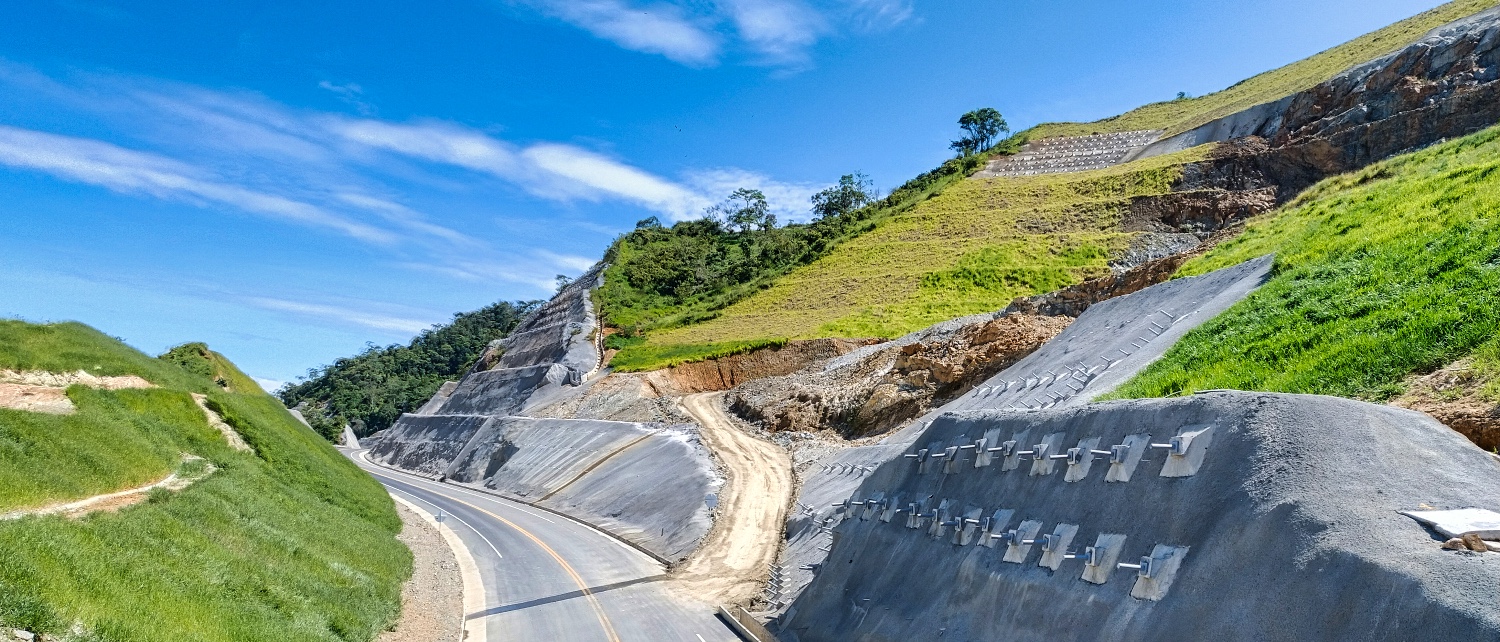
Along Ruta 60, 25, and 62, I drove through a green subtropical landscape toward the Caribbean at just over 30 degrees Celsius. The roads were well maintained, and except for a bus that decided to overtake the cars waiting in front of a construction site, everything went smoothly. The bus then blocked oncoming traffic, and it took almost 30 minutes to untangle this Gordian knot.
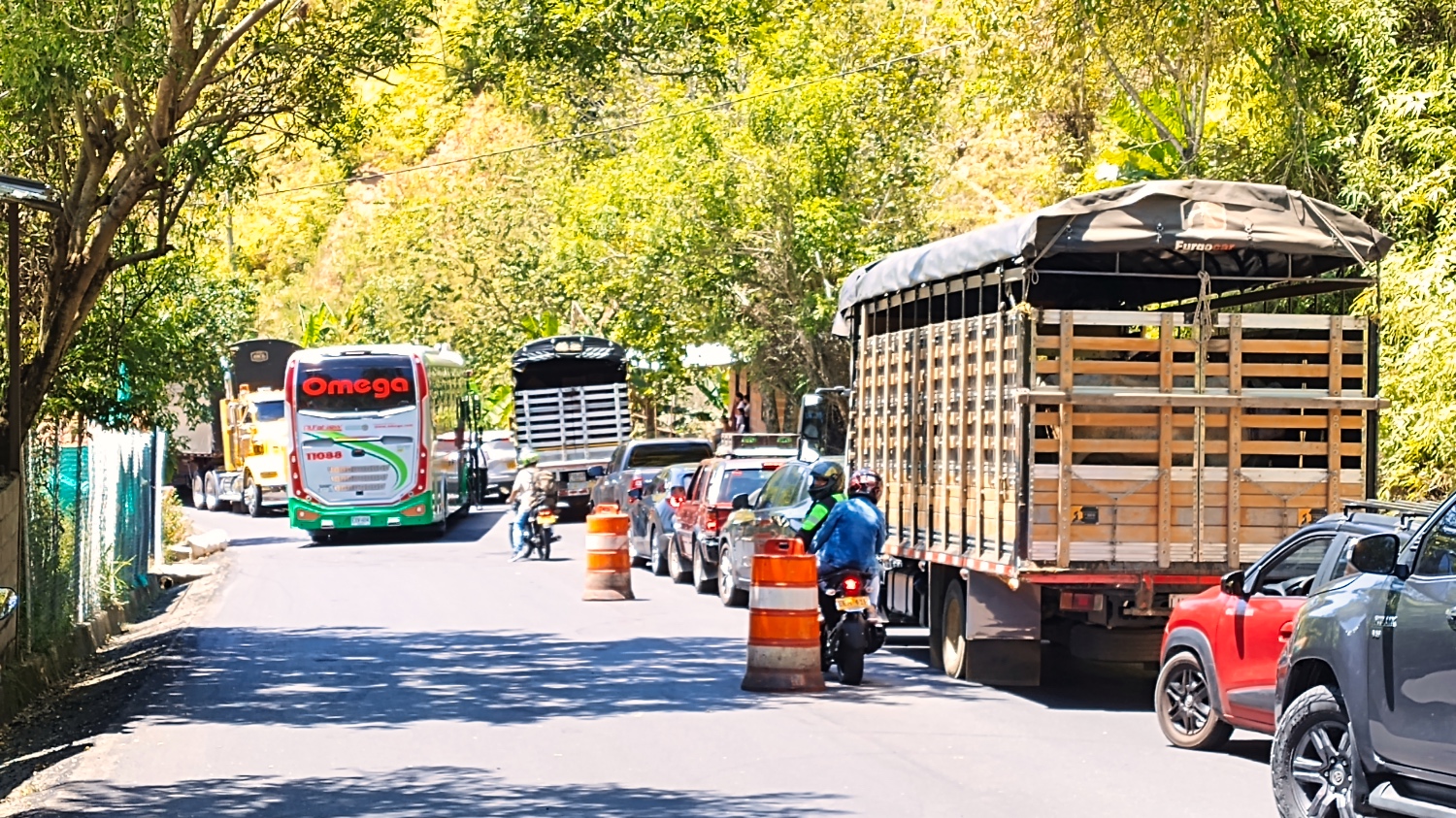
The closer I got to Otu, the more rural it became. My pitch in Otu was the parking lot of a hotel and offered a small restaurant and shade. What more could you want? When I heard loud honking around 7:00 pm and saw fireworks a few minutes later, I went out to the street.
It was the procession in honor of the Virgen del Carmen (July 16). Now I know that the festival in honor of the Virgen del Carmen takes place throughout Colombia and in various other countries.
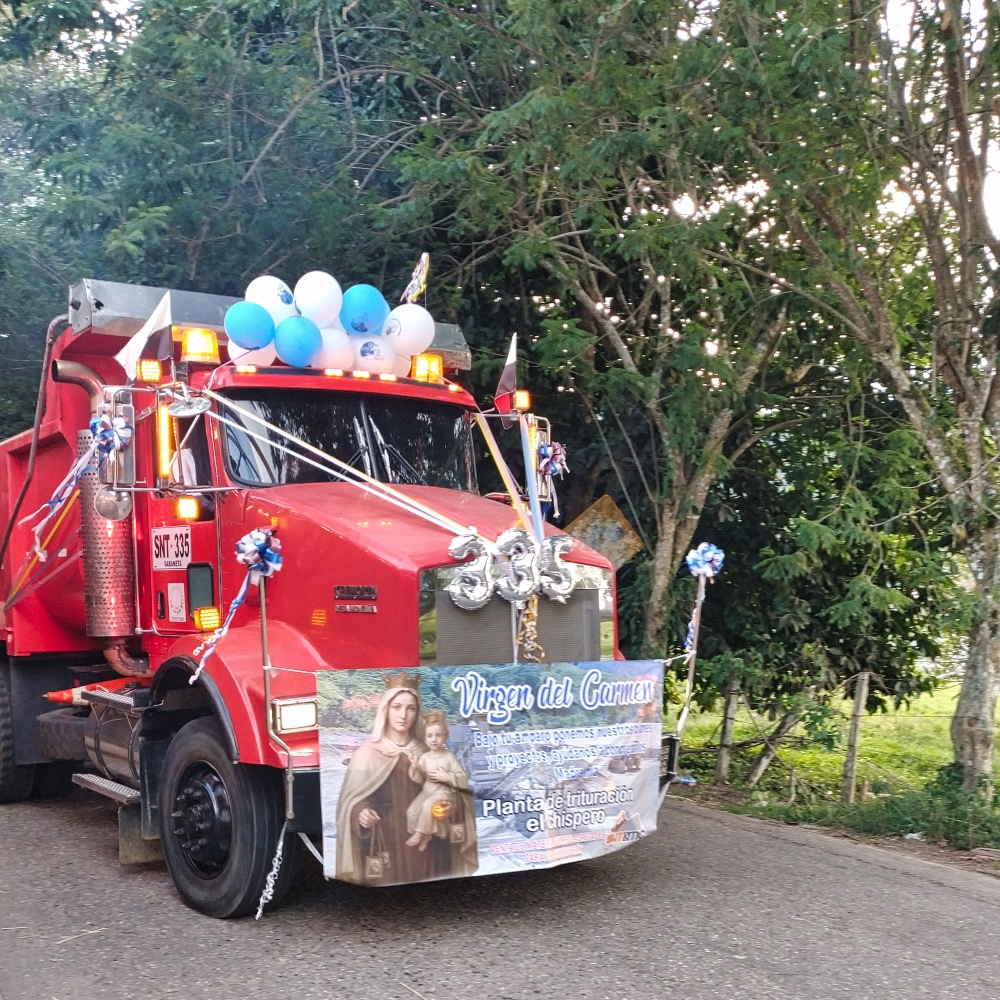
The Virgen del Carmen is the patron saint of transporters. That's why decorated trucks, motorcycles, cars, and buses drove through Otu. I then found on Google that she is also the patron saint of the army and sailors. She came to Colombian territory with the sailors who took part in Christopher Columbus' expedition.
In any case, I understood the nature of the procession in retrospect.
I had slept poorly that night for the first time in a long time because, at 26 Celsius in the van, I missed having air conditioning.
On the entire route to Cartagena, the few kilometers before and after Remedios were the only ones with poor road quality. After that, I drove on a perfect road into the Colombian lowlands off the coast. By Caucasia and the Rio Cauca at the latest, I was no longer traveling in the hills. It became even warmer and more humid, and the sun beat down on the road and the van.
Whereas I had previously seen green hills, from Caucasia onwards it was lakes, streams, and rivers that interrupted the green forests.
It was not until Puerto Córdoba that I found stalls and stands where you could get something to eat after passing a construction site. With the temperature feeling like 40 Celsius, I sat down at a plastic table 2 meters away from busy Ruta 25 and 50 meters from the Rio San Lorenzo. They cooked fish was brought by a young man who had apparently just caught it.
The cook bought 2 small bocachico, which look like sea bream to me. The bocachico (Prochilodus magdalenae) is a medium-sized Colombian fish that can be found in the Magdalena, Sinú, Cauca and Atrato rivers and in the swamps.
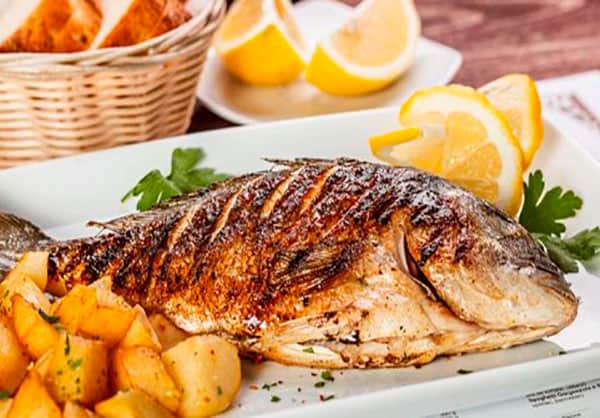
The fish was perfectly grilled and we had it with some salsa and potatoes. It looked like on the picture. Appetizer was a fish soup without any additives.
I didn't understand what kind of juice the woman gave me, but it was slightly sour and cool. Since there are an infinite number of different juices mixed with water or milk, it could have been lulo or something else.

Despite the heat, I enjoyed the meal but was sweating like a pig when I got into the camper van 30 minutes later, 15,000 COP poorer.
Thrilled by my lunch, I stopped in Buenavista and bought Colombian chorizo and arepas from a woman on the side of the road. However, the supposed arepas were more like delicious potato pancakes.
Colombian chorizo is made from pork and beef (with coarse pieces) and contains a number of spices, such as cumin, garlic, and chili peppers. Mine had something like spring onions in it. Although Colombians say it's the spices that make it unique, the Ecuadorian version tasted similar for me. But what is true is that the sausage tastes very different to Spanish chorizo.
The chorizo stands were also easy to spot, because when grilling, the sausages are first hung above the wood grill and cooked or smoked. Only when a customer orders one are they grilled for a few minutes to finish. The stands are almost impossible to miss.
I arrived at the campsite in Coveñas around 5:00 p.m. The only thing that caught my eye along the way were huge flooded meadows, or swamps.
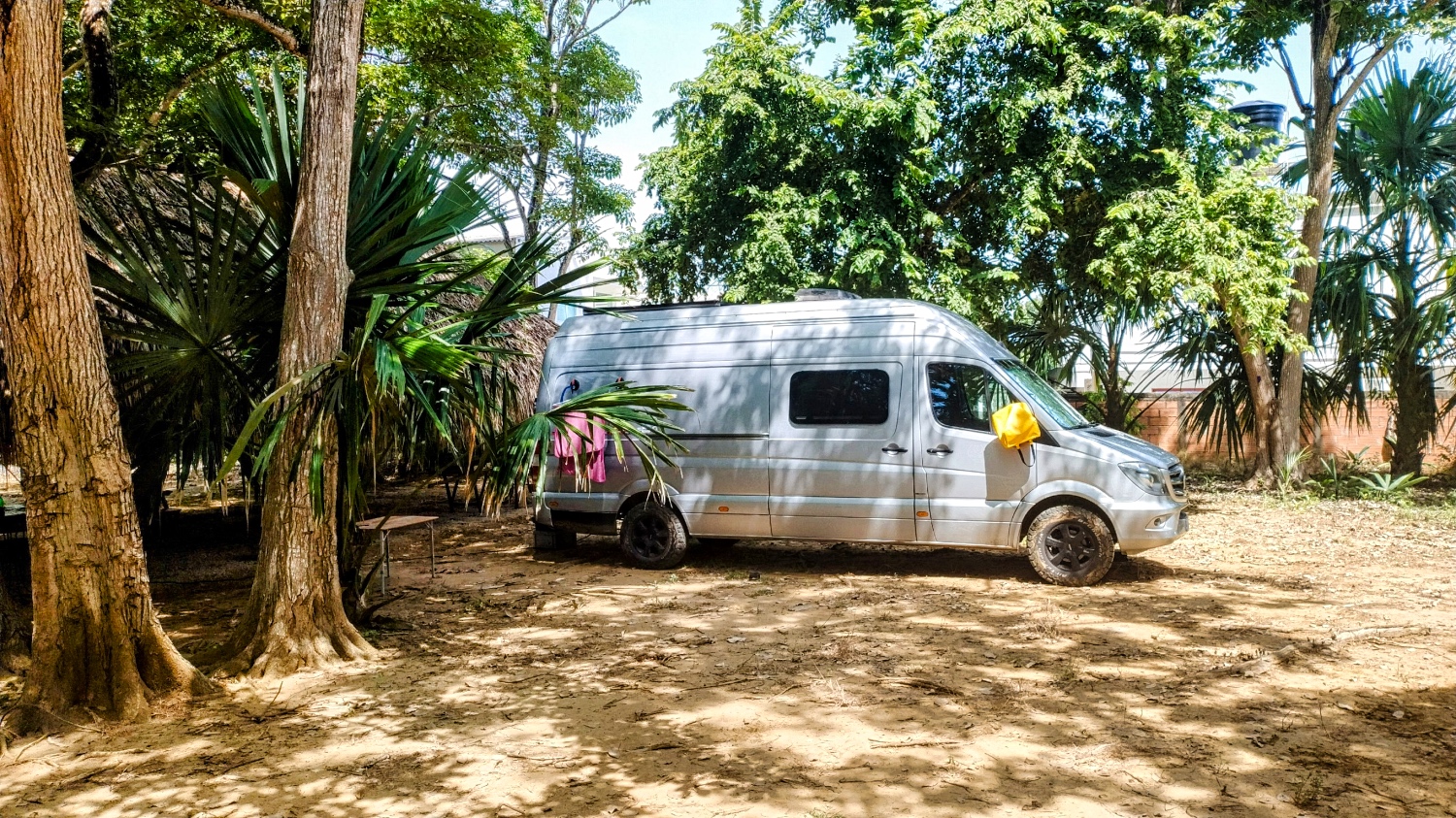
The Costaguana Camping Park was very simple. It offered shade, had two toilets, and direct access to the Caribbean. There were also two showers, but that was it. It had 37 Celsius at 5:00 pm when I arrived. At night, it even cooled down to 28 Celsius...
I slept with all the doors open, but my T-shirt was quickly soaked with sweat. At 6:30 the next day, music from the neighboring campsite woke me up. The schoolchildren's trip was over and it was time to leave. Every 10 minutes, the music got louder. From 7:00 onwards, commands were given to the kids over loudspeakers and other loud music was played.
This is what Colombia is about...
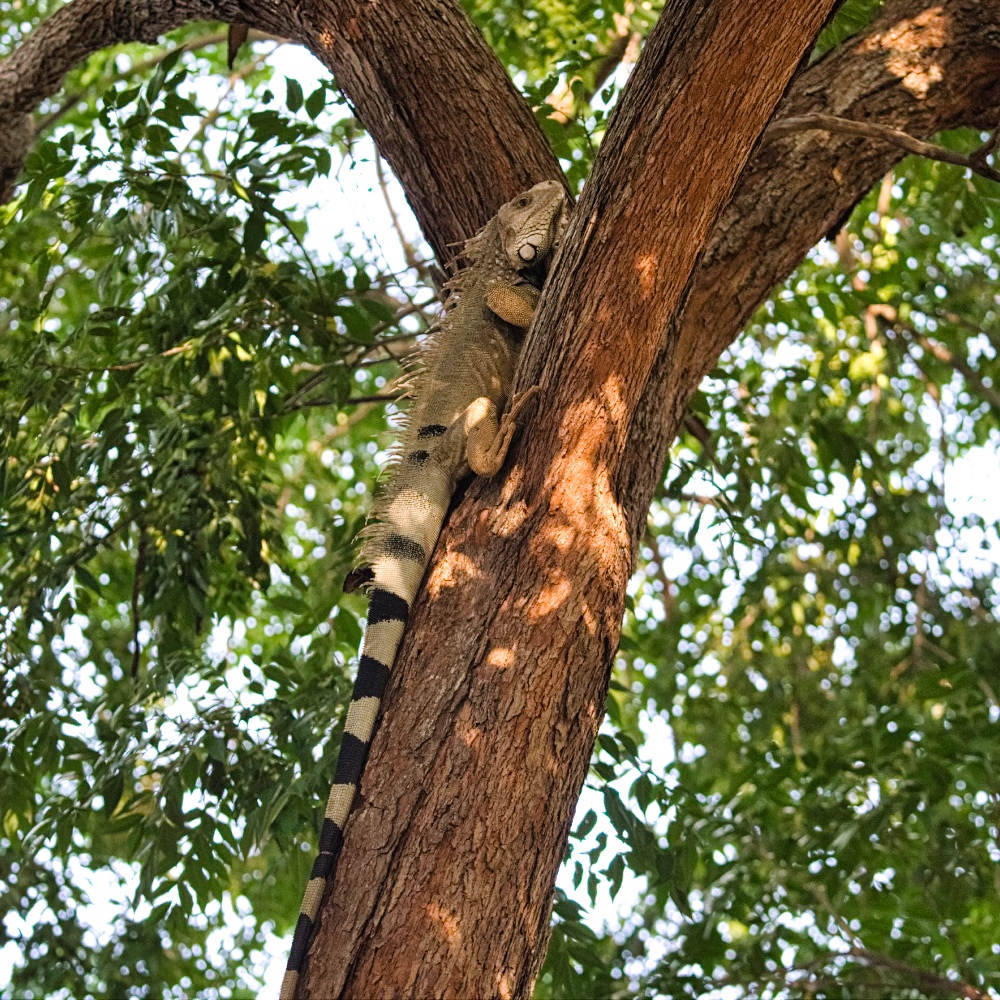
My daily routine for the next few days consisted of getting up, eating a cold breakfast, and staying out of the sun. In the late morning, before it got too hot, I would take a quick dip in the Caribbean and then take a shower. I would do the same thing again in the late afternoon.
I cut my trip to Coveñas short after two hours one morning and took a tuk-tuk back. It was simply too hot and there was no breeze. But I did manage to drink a delicious passion fruit milkshake.
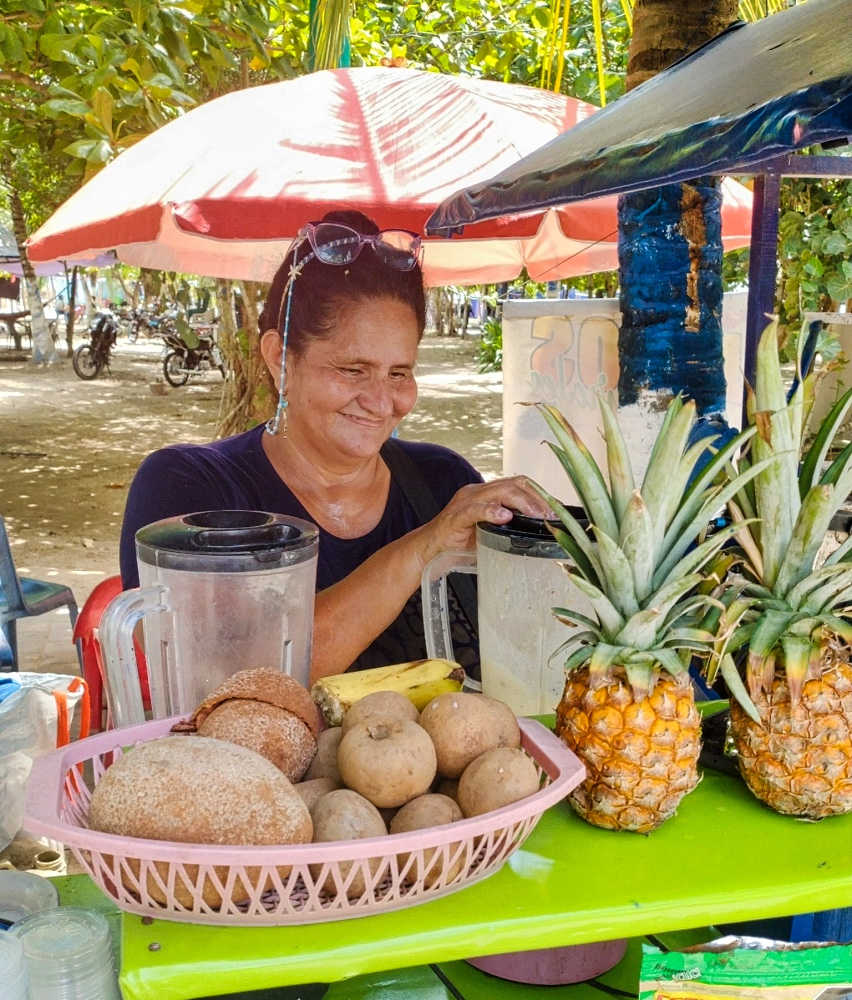
I was amazed at how quickly you get used to doing nothing in these temperatures. Nevertheless, I had to make my way to Cartagena. I was lucky to stumble upon a campsite on the Península de Barú.
It was a little more well-kept than Coveñas and had a dream of a beach. I parked right on the beach, less than 10 meters between me and the sea. Life became even more pleasant because there was always a breeze blowing from somewhere. It definitely enhanced my doing nothing.
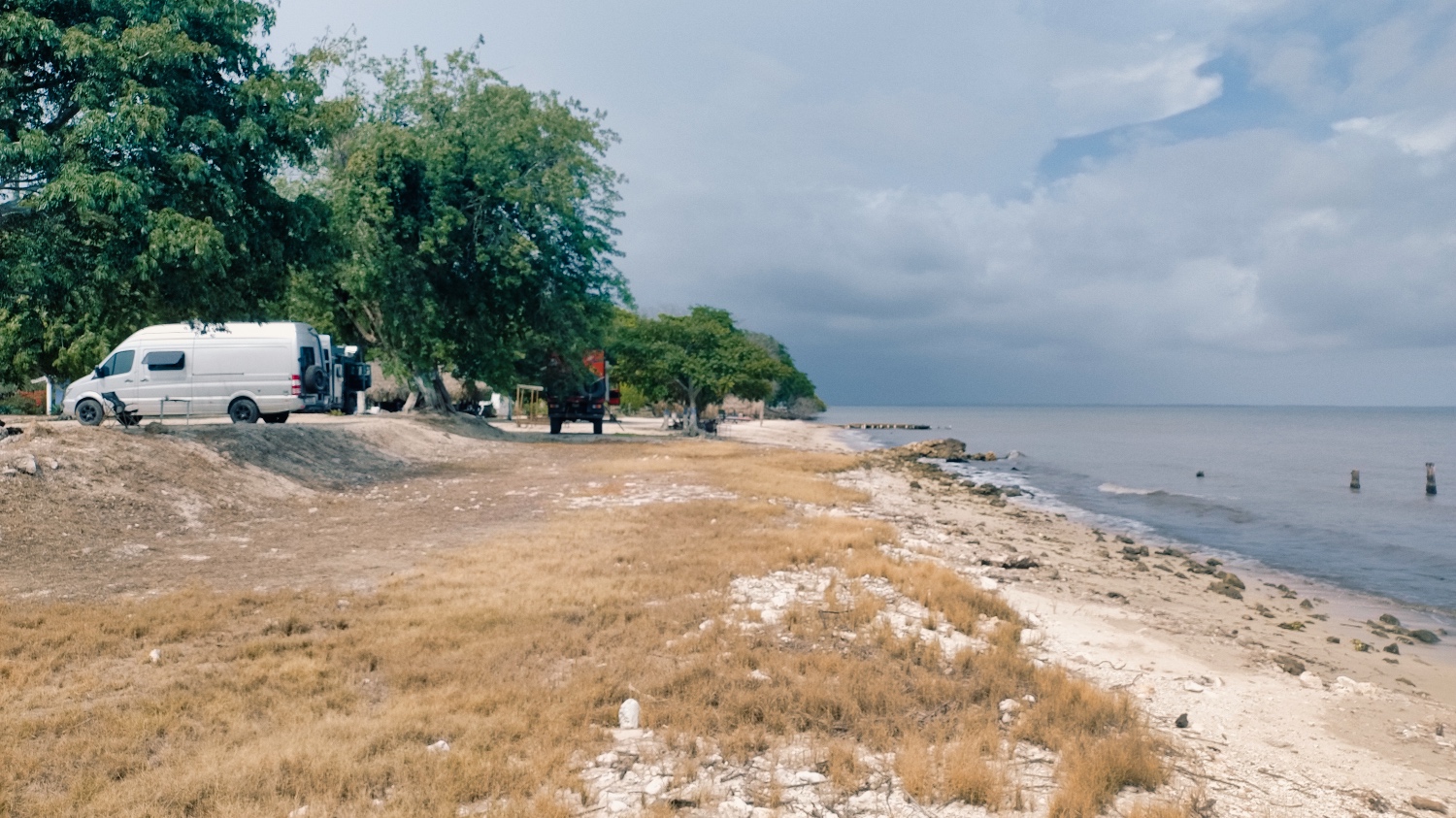
Only the water from a pond ruined my stay, or rather my ALB filter after 15 liters. I had to think about finding another place, because I had to get the motorhome ready for departure, i.e., clean it.
Note: It was difficult to get drinking water on the Caribbean coast. Without your own filter system, you have to rely on 6-liter water bottles.
When I was in Medellín, I had my first contact with my agent Ana Rodriguez from Asesores Cortes Rodriguez. I had to send her the usual copies of documents (passport with entry stamp, driver's license, DIAN Columbia Acta de Hechos, vehicle registration, picture of VIN). Then, a few days later, the appointment for entering the port (3-4 days before the ship's arrival) and a checklist arrived. The drug inspection would be carried out the day before the ship's arrival. There was a weekly update on the appointment, and the appointment changed frequently.
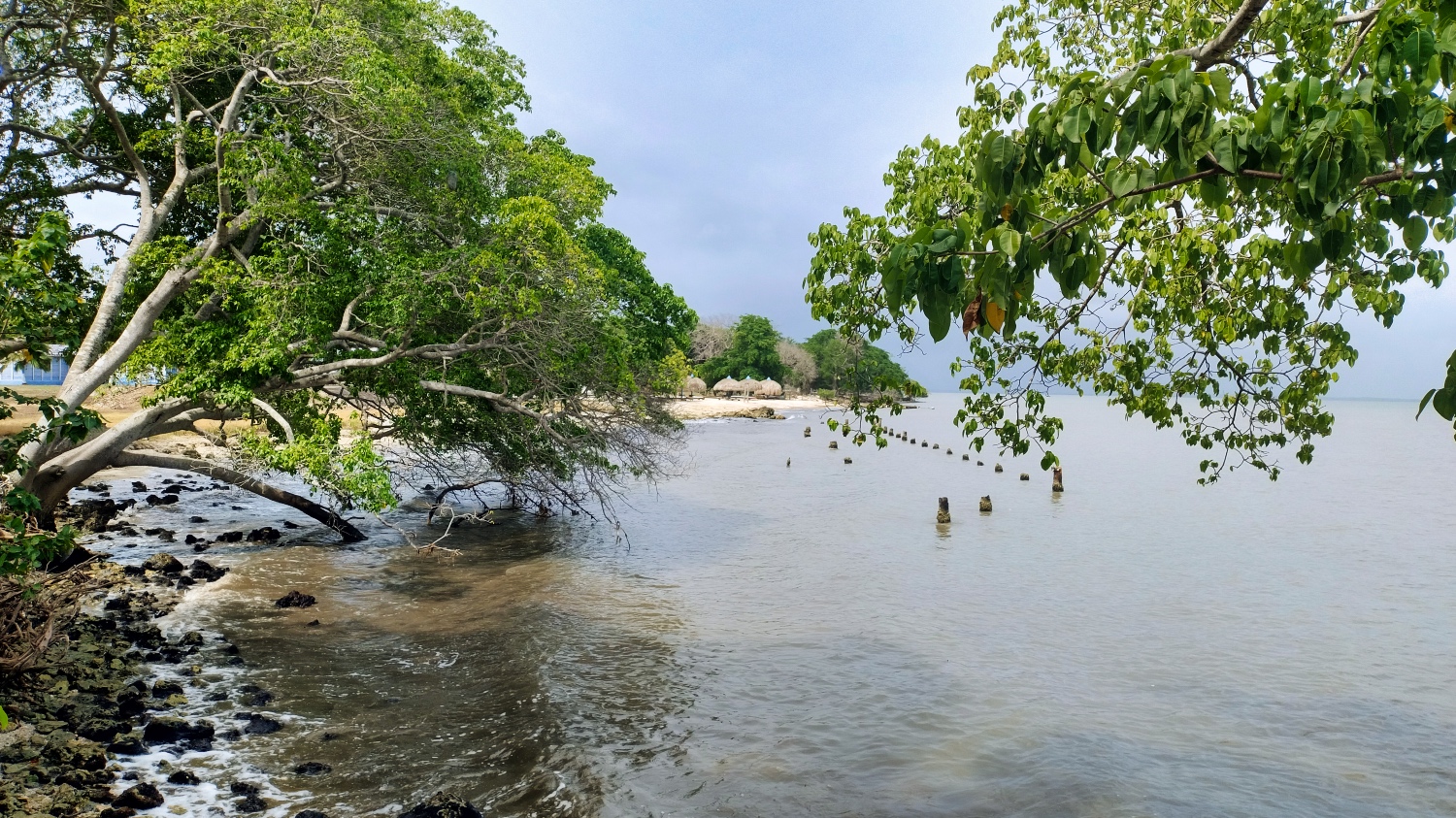
I also had to pay the applicable fees for the drug inspection. I planned to pay in cash and USD. Credit card payments incurred a 5% fee.
Checklist for vehicle preparation:
- Protect your seats or mattresses, if desired.
- If a gas cylinder is being transported, it must be completely emptied and washed. -> I also attached a label indicating that the cylinder was empty. Same with the spare diesel canisters.
- The van's auxiliary batteries must be disconnected and the positive and negative terminals protected so that they cannot come into contact with other objects.
- Secure the transporter's power supply (remove the fuse).
- Secure the solar modules if necessary (remove the fuse).
- The transport company does not accept any objects protruding from the vehicle (e.g., shovel, water canister, gasoline canister, sand shovel, jack, etc.).
- Your vehicle must be washed before entering the port.
- Fuel tank less than 20% full
Checklist for entering the port
- You only need to present the ignition key of your vehicle to the port service for transport.
- Bring your passport with you.
- Bring safety shoes or provide your size (we will provide you with a pair).
- Safety helmet (provided by our company).
- Yellow vest (provided by our company).
- You must wear long pants.
- You must wear a long-sleeved shirt/sweater.
The initial contact was made by email, but Ana later created a WhatsApp group. The language was Spanish.
The next step was to check the SOLICITUD DE AUTORIZACION DE REEXPORTACION O SALIDA DE VEHICULO DE TURISTA for accuracy.
It wasn't really much work, especially when you're sitting on the beach looking at the Caribbean.
Just booking a hotel that met my requirements and budget was a longer process. My return flight was booked for August 8, and I would be returning the motorhome on July 30. Nine days in a hotel didn't sound very appealing to me.
I tried to go shopping in Cartagena the next day. Finding a parking space along Calle 31 proved more difficult than expected. It was busy here on a Friday morning and the parking lots at the D1 and Ara supermarkets were full. So I drove out again and tried my luck at Troncal del Caribe. I was almost out of the city when I found both a D1 and an Ara with parking spaces.
I was glad when I arrived at Finca Jardin Des Délices at 1:00 pm in 34 Celsius. This was where my South American tour was supposed to end. At least, that was my plan, because there was clean water, shade, and plenty of space. I could have saved myself the trouble of washing the motorhome, because after four days at the port, it was completely covered in dust and bird droppings on the outside.
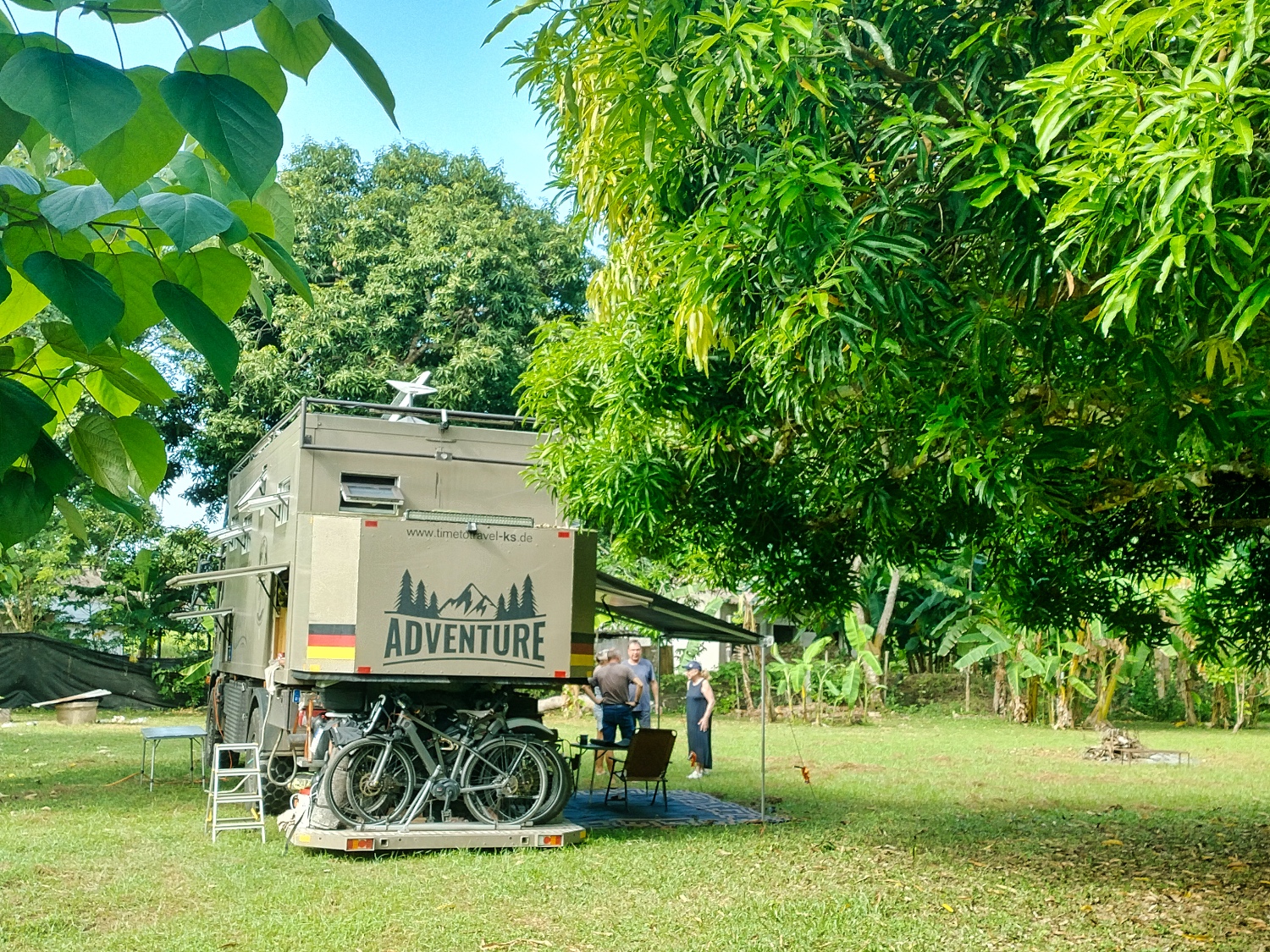
The fact that a birthday party with really loud music was being celebrated 200 meters away on Saturday evening only bothered me at 3:00 am. The music was really not my taste! But it was loud. Even my noise-canceling headset couldn't completely block it out.
I spent the next few days relaxing, tidying up the motorhome, cleaning, and distributing food to overlanders who were on their way south. The ship's arrival was delayed, but the drop-off at the port remained the same.
At 10:00 am, we met two employees of Ana Rodriguez at the EDS gas station in Puerto Bahía. It was already well over 30 Celsius when we put on our safety shoes, helmets, and vests. A few minutes later, we parked in front of the second entrance to the port, handed over our passports, and stood around decoratively. We had to have our VIN photographed, but that was it. Ana's employees did the work.
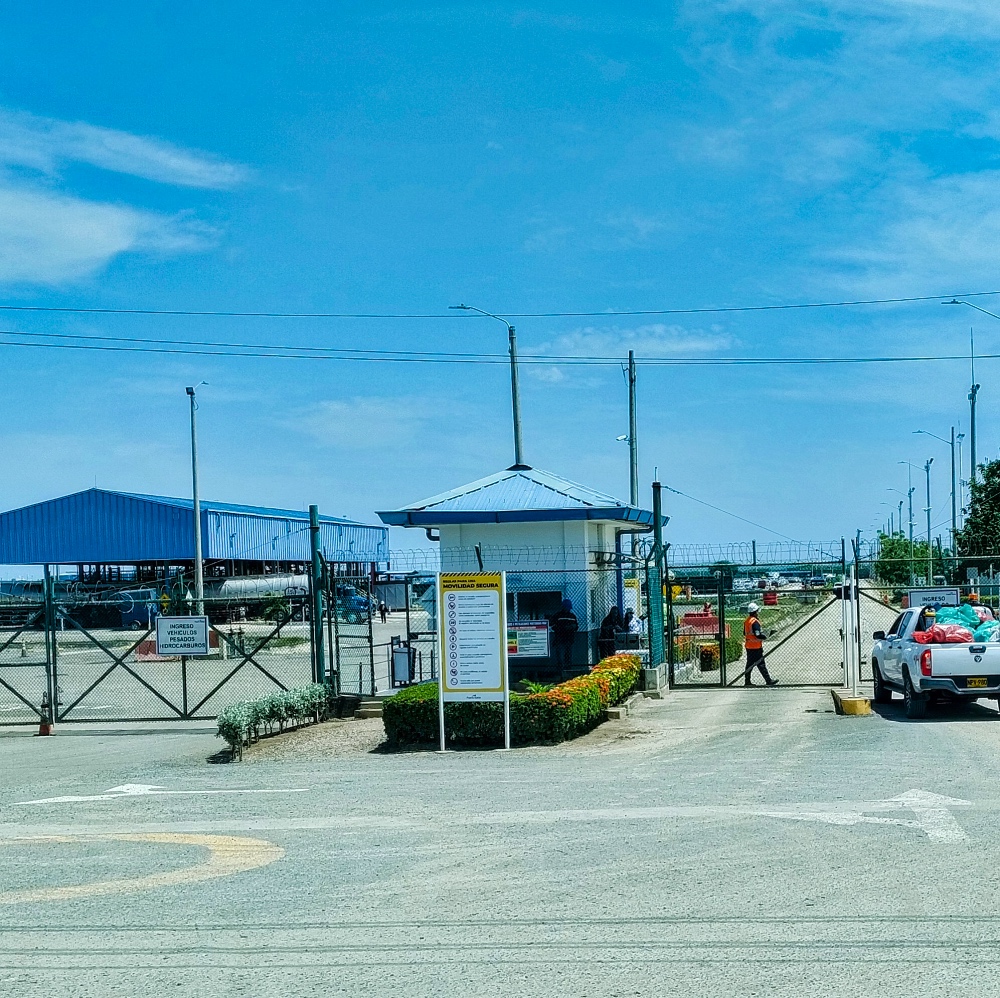
After about 1.5 hours, we drove into the port, were weighed, and parked the vehicles. A few pictures were taken, and we continued on to an air-conditioned container office. After another 1.5 hours of sitting around, we finally got a few stamps and were done after a total of 4 hours.
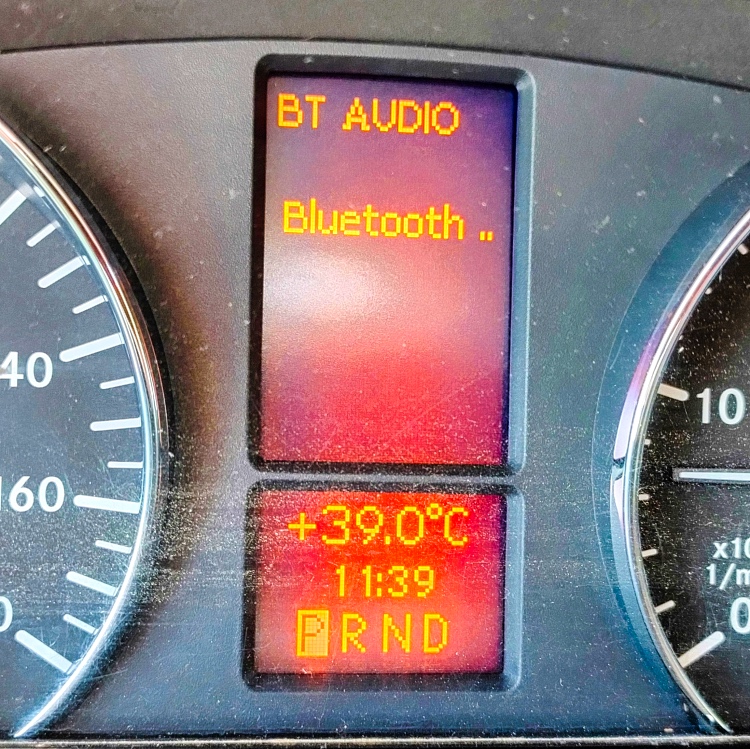
If someone had offered to go there for me, I would have gladly paid 50 Euros for it. It's just no fun standing around for 4 hours, not getting anything to drink or eat, and waiting. After that, we went back to my hotel on Calle del Arsenal / Calle 24 via Ana's office.
Until the Dia de Antinarcoticos, which took place the day before the ship arrived, we only had to sign two documents and had the rest of the time to ourselves.
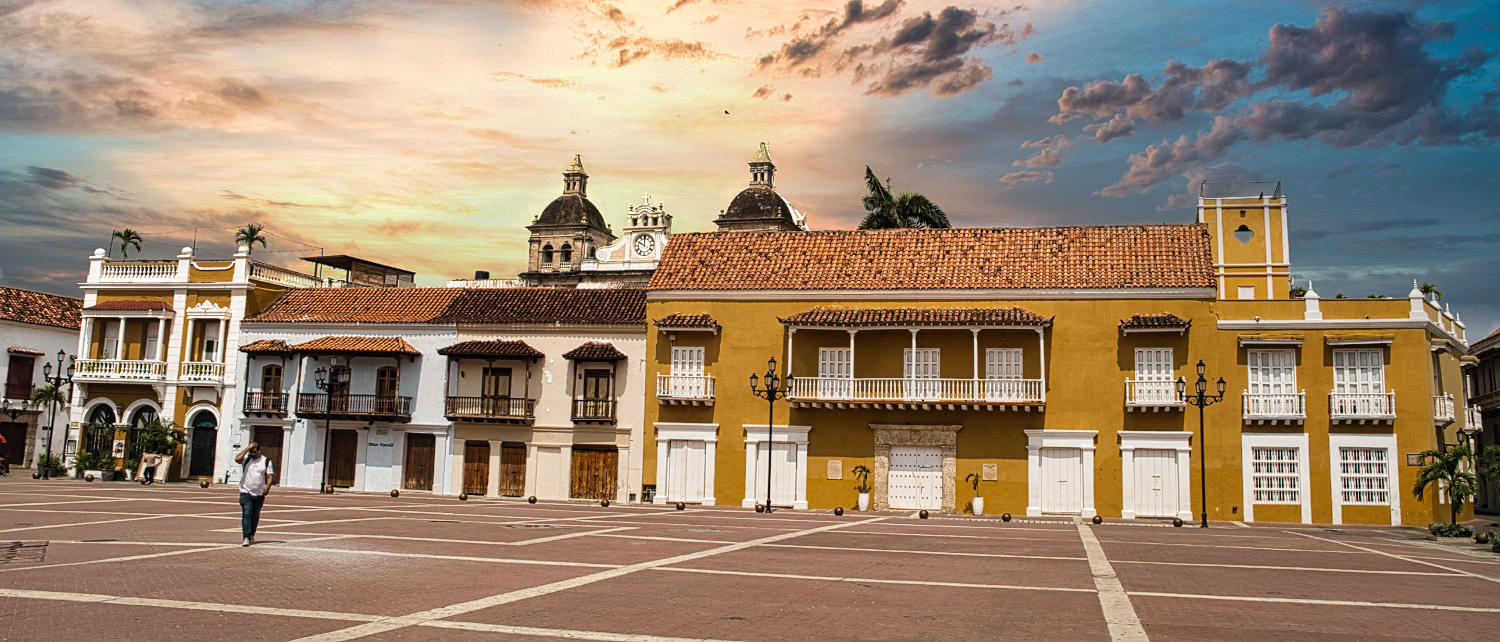
I spent the week until my departure in Cartagena. With temperatures around 30 to 35 Celsius, I scheduled my excursions for the morning or late evening.
Cartagena de Indias (Cartagena for short) was founded by the Spanish in 1533. Much of the artistic and cultural heritage in the historic center, aka the “walled city,” dates back to the time of the Spanish viceroyalty. In 1811, Cartagena declared its independence from Spain. Today, Cartagena has just over 1 million inhabitants and is the fifth largest city in Colombia. Most of them live in the barrios outside the centro. Around it are another 13 centros poblados. The Baru Peninsula is one of them.
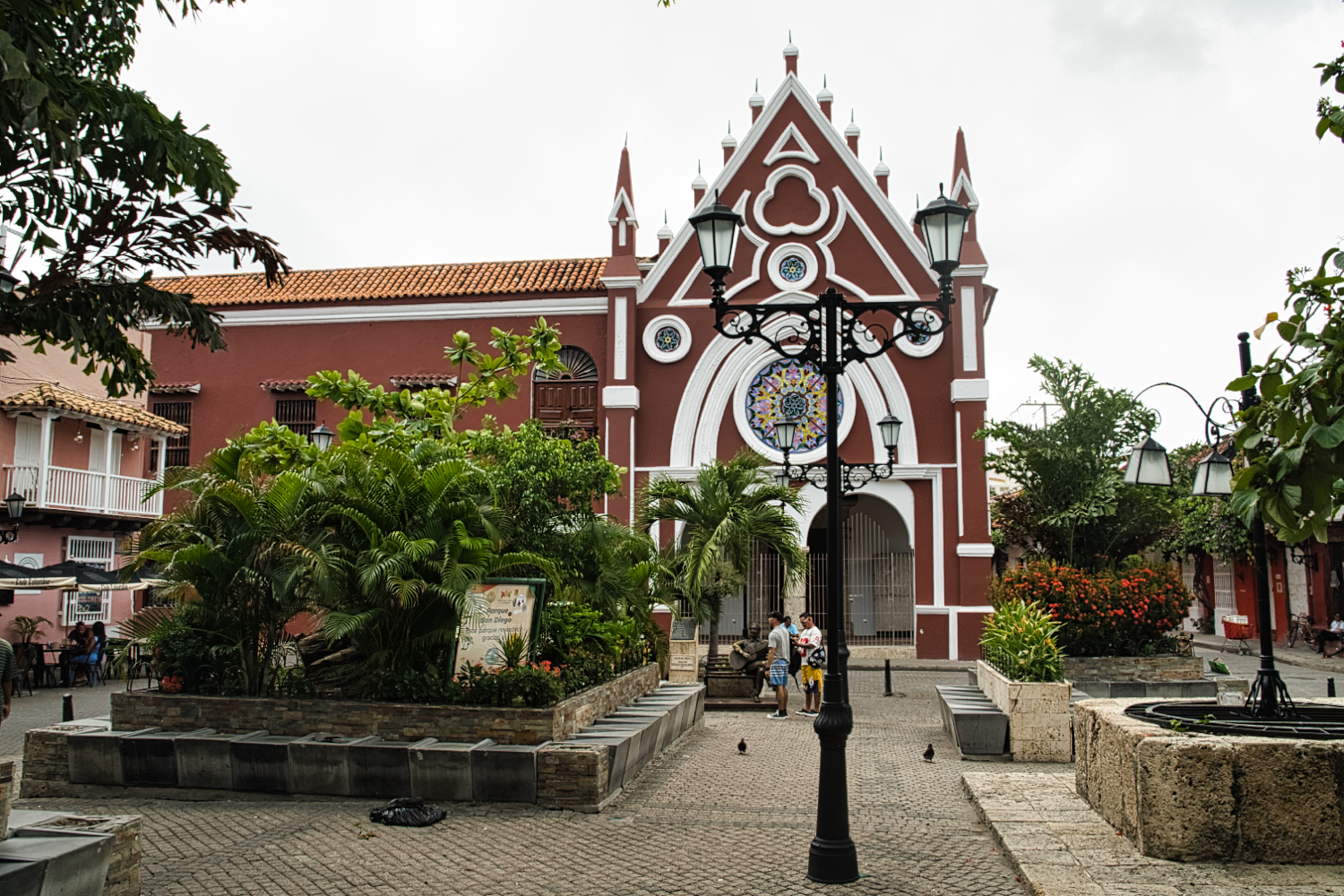
In Cartagena, you can find Spanish architecture from various eras, among other things. The fact that Cartagena is a UNESCO World Heritage Site definitely makes it a tourist magnet. In my opinion, there is no real competition on the Colombian Caribbean coast.
Cartagena's second mainstay is probably the port and the associated logistics hub.
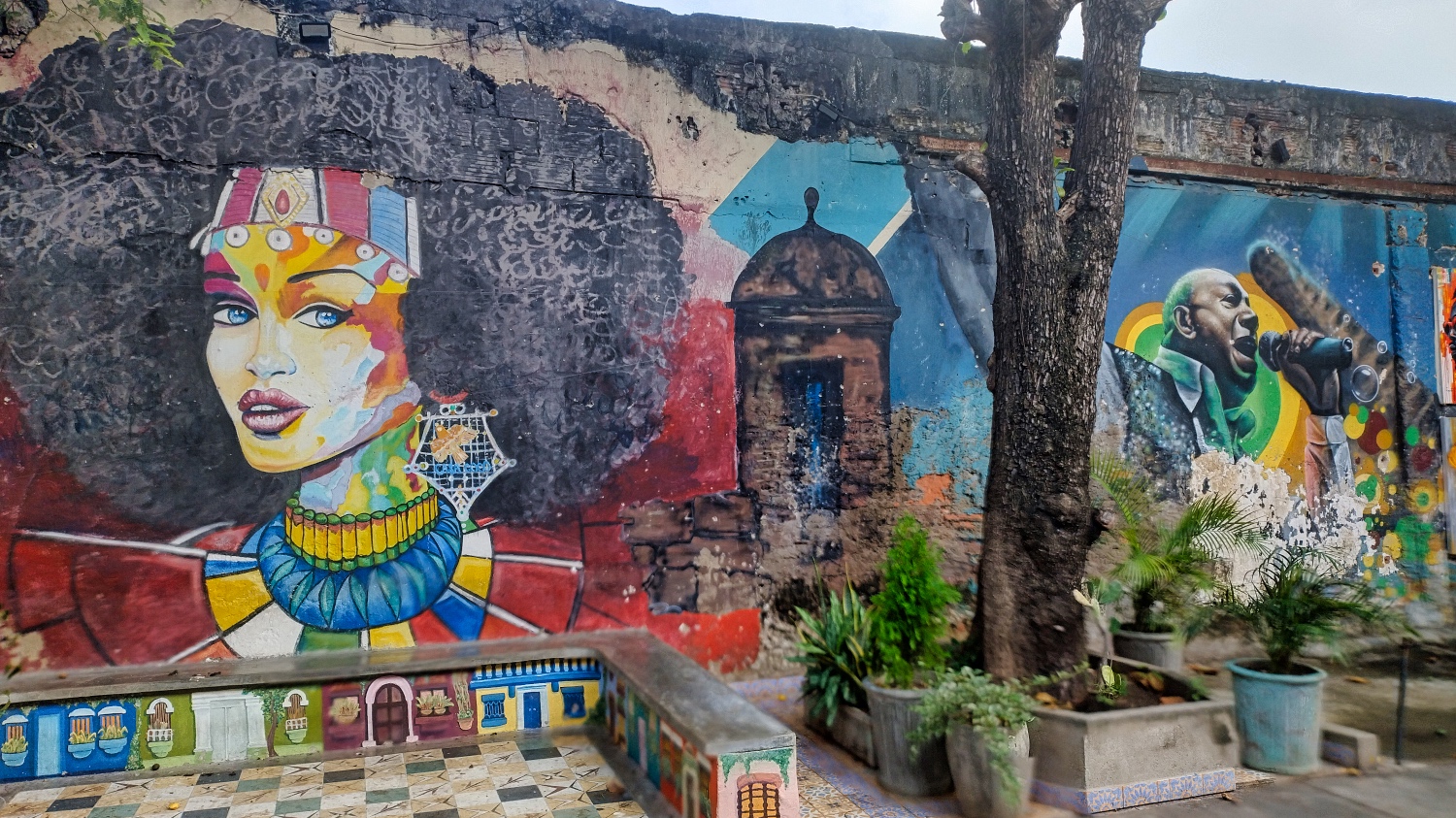
After 2 three excursions in the morning, when there were fewer tourists around, I felt I had seen everything of interest. I only went to the Centro afterwards to eat or take pictures.
You could buy souvenirs here, but the selection was limited and I always found the same things at the stands. Even the pictures in the Centro Artesanía were mostly mass-produced, and you had to search for originals. I don't know how, but the starting price of the goods was almost always the same, but bargaining did help.
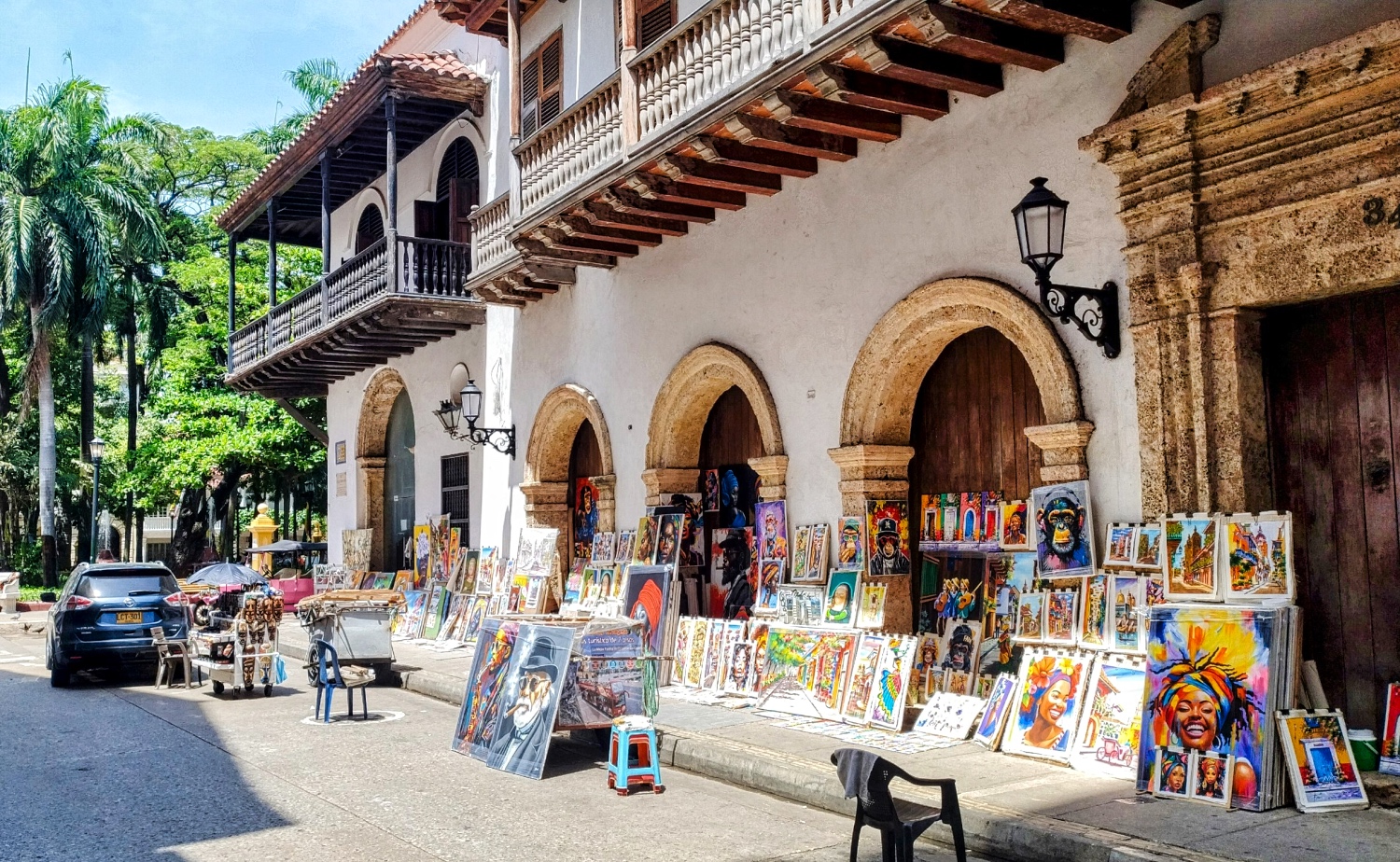
I had previously bought Ron Medellin 3 Anos or 8 Anos for around 35,000 COP. In Cartagena, they started at 65,000 COP.
Only the nightlife was really varied. From party buses to live concerts in clubs, carriage rides, and food stalls, there was so much to marvel at in the evening. With a cocktail in my hand, or a beer if necessary, I could watch the hustle and bustle for a while. Hanging out on the Baluarte de Santa Cruz with a cold beer in my hand or in one of the rooftop bars had its charm. You just have to get used to being approached every few minutes and smilingly saying no to every offer.
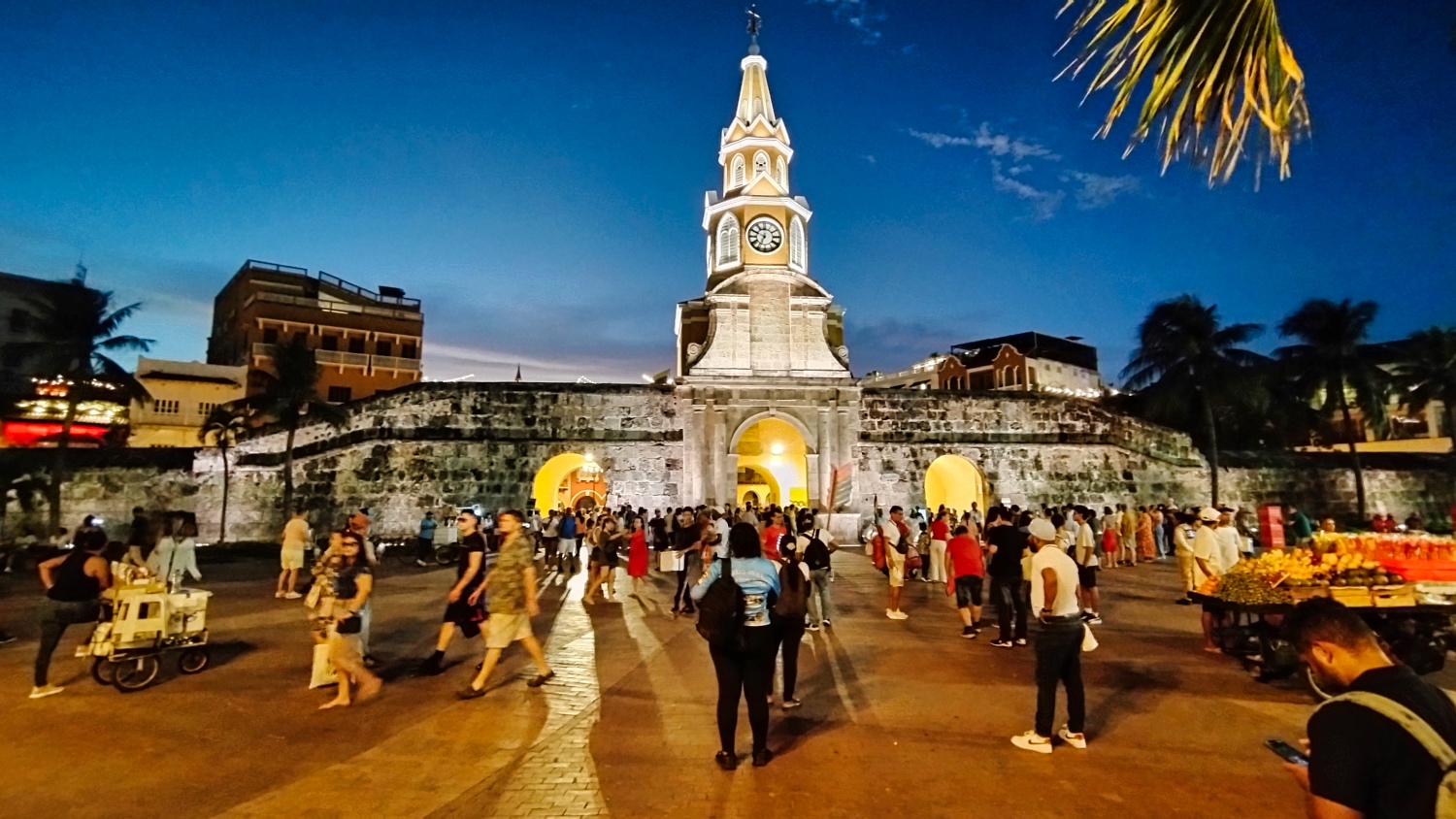
And then came the customs and drug control, which started at 6:30 in the morning. Entry into the port was at 8:00. First, I cleared out my storage space.
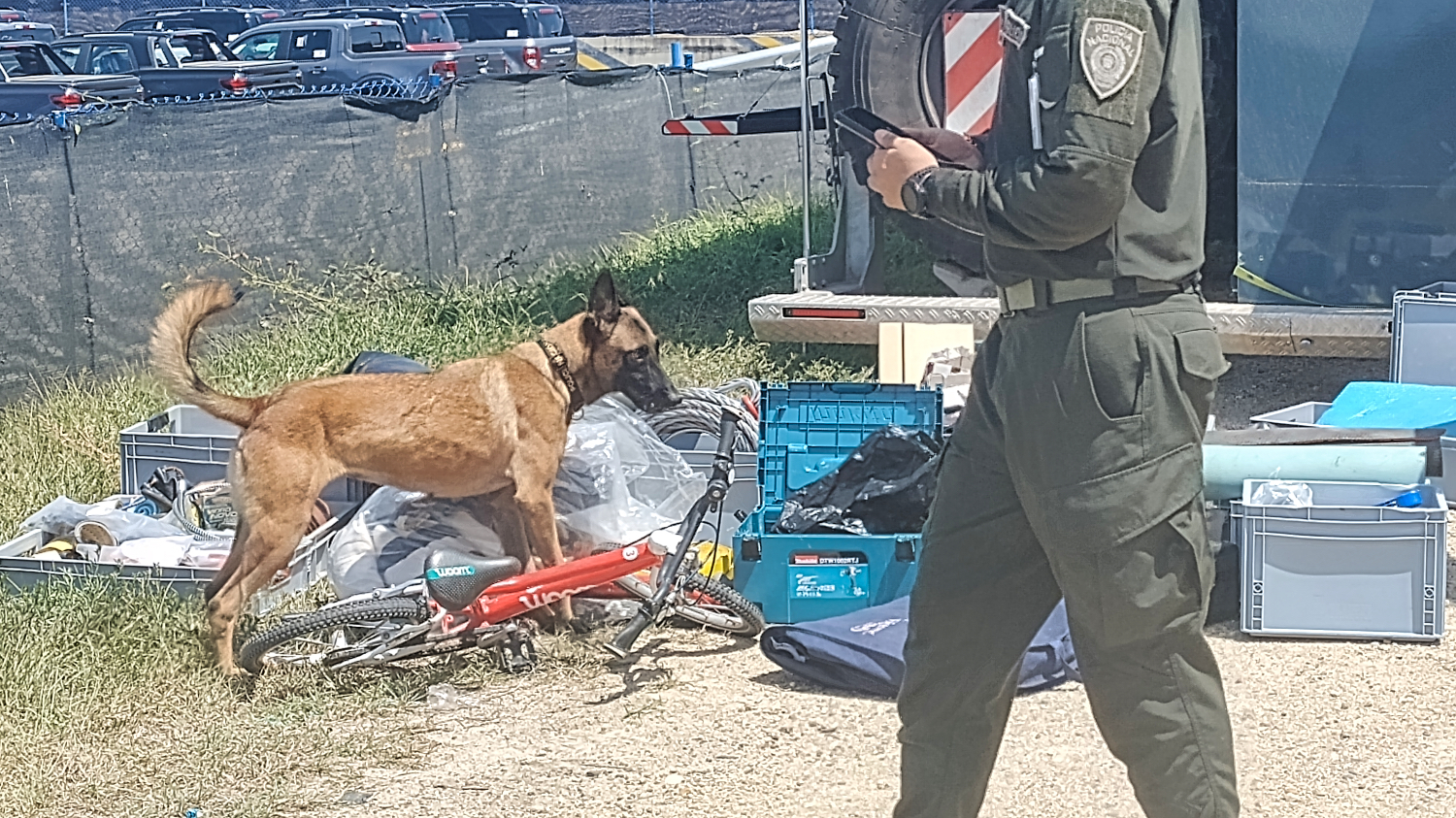
Since I only had boxes in the back, it went quickly, but for others who generally had their belongings in boxes, it was more work. And then it was time to sit around again. A few minutes later, an official showed up to take down the details of the vans, but did nothing else. Almost 1 .5 hours later, two customs officers showed up with a cute dog. First, they inspected the motorhomes, and I'll summarize it like this. I could have saved myself the trouble of tidying up.
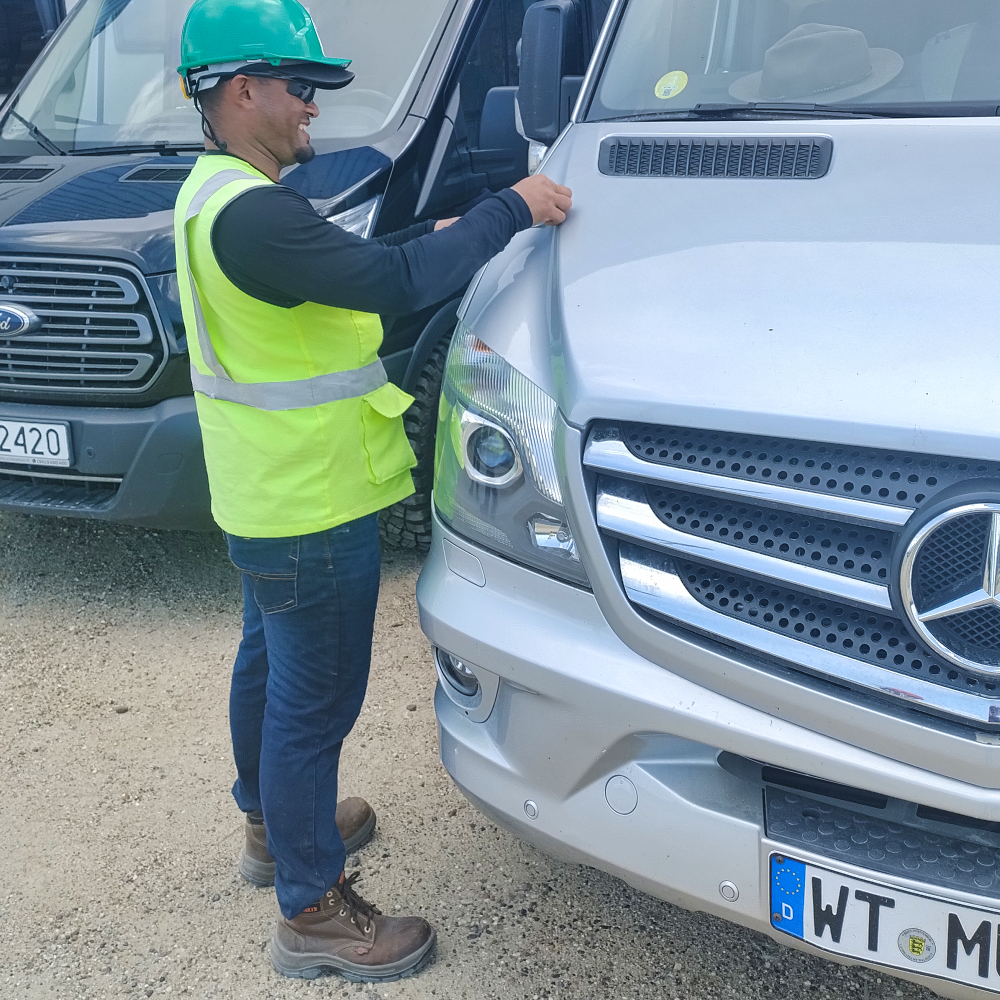
Inside the motorhome, all the drawers were opened, my bed was rummaged through, and after 10 minutes, I had a mess. A few minutes later, the dog ran cheerfully between and through all the motorhomes, sniffing around, but found nothing. Then I got the “Es final” and was able to clean up the mess and put the boxes back.
None of us had any problems with the “empty gas bottle” or the empty jerry cans. After about 3 hours, it was all over, and around noon we paid our port fees to Ana Rodriguez in USD. While it had been pleasantly warm in the morning, it poured in the afternoon.
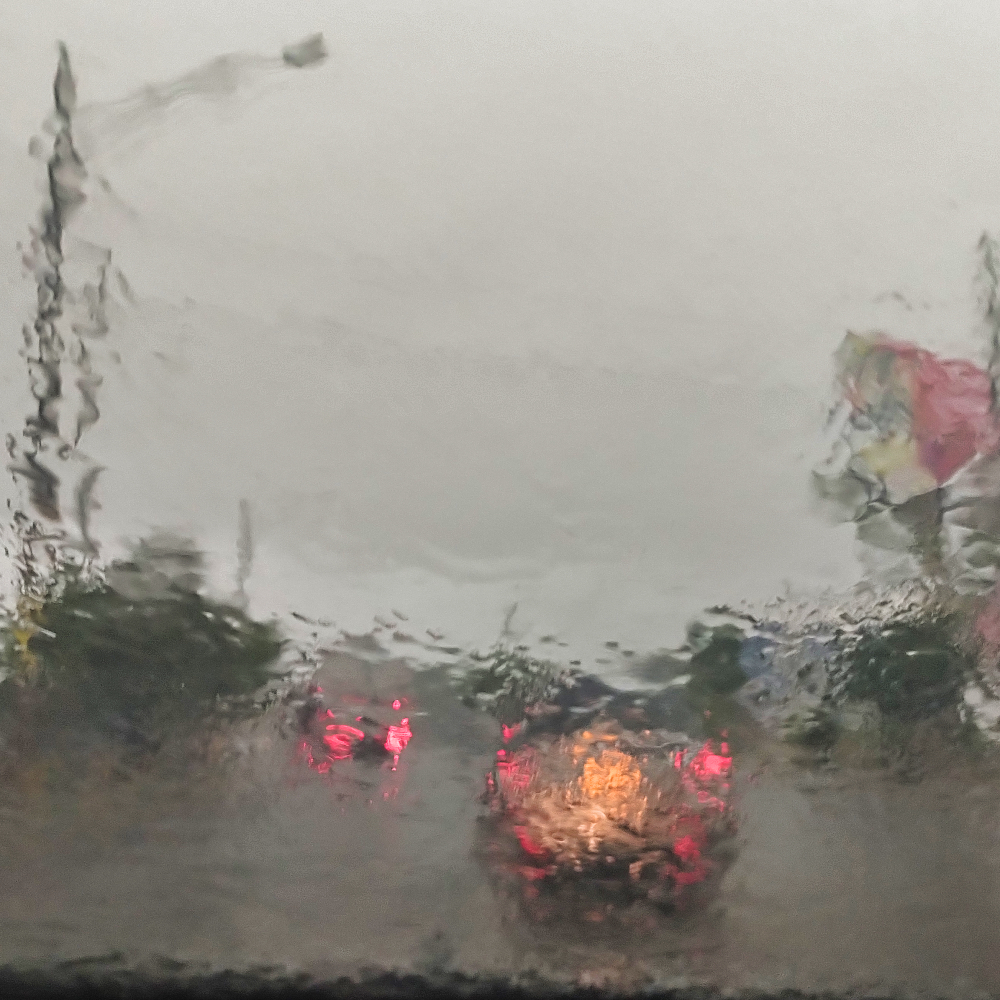
Perhaps I should mention that the temperature in Cartagena was over 30 Celsius during the day and the humidity was high, especially when it was raining like that. I sweated through two T-shirts that day and it took a hell of a time to dry them in the hotel room so that they didn't stink in my suitcase on the return flight.
And just like that, 10 months in South America flew by.
And finally, an overview of the height of my pitches over the 10 months
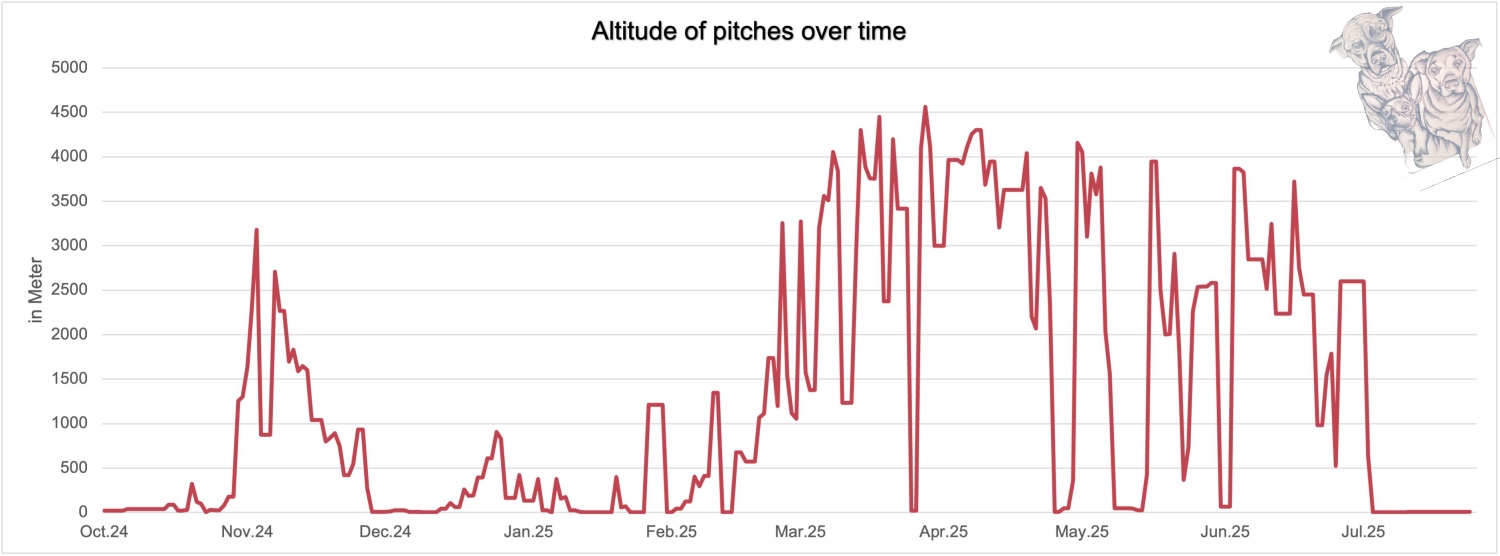
Update Antwerp: 2.5 weeks later the van was somewhere in the huge harbor of Antwerp. Spent a day in the city before I got the GO to pick up the van at Haandorpweg 2 Beveren-Kruibeke-Zwijndrecht
Procedure is simple.
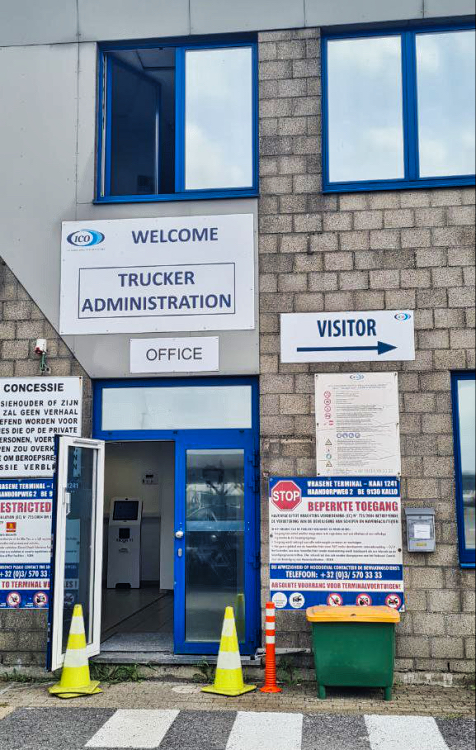
Enter the building on the right of the Gate
I scanned my passport on the machines in the first room and took a printout to the counter in the aisle on the right
Handed over the collection reference that I got from Overlander Shipping, the printout and my passport to the harbor employee.
After a few minutes, I got my passport back and a different employee brought the van to the building, still in the secured harbor area
They checked the yellow label on my windshield and I got a PIN to enter the harbor, check the van and leave the harbor with the van.
No police or customs inspection. That must have happened before, because the signs were visible in my van.
The whole activity took 30 min
I learned that my battery was flat and that they bypassed the battery. As long as I would be driving for a while I should not have a problem, was their feedback
However a last surprise was waiting for me. What I didn`t know and nobody told me was...
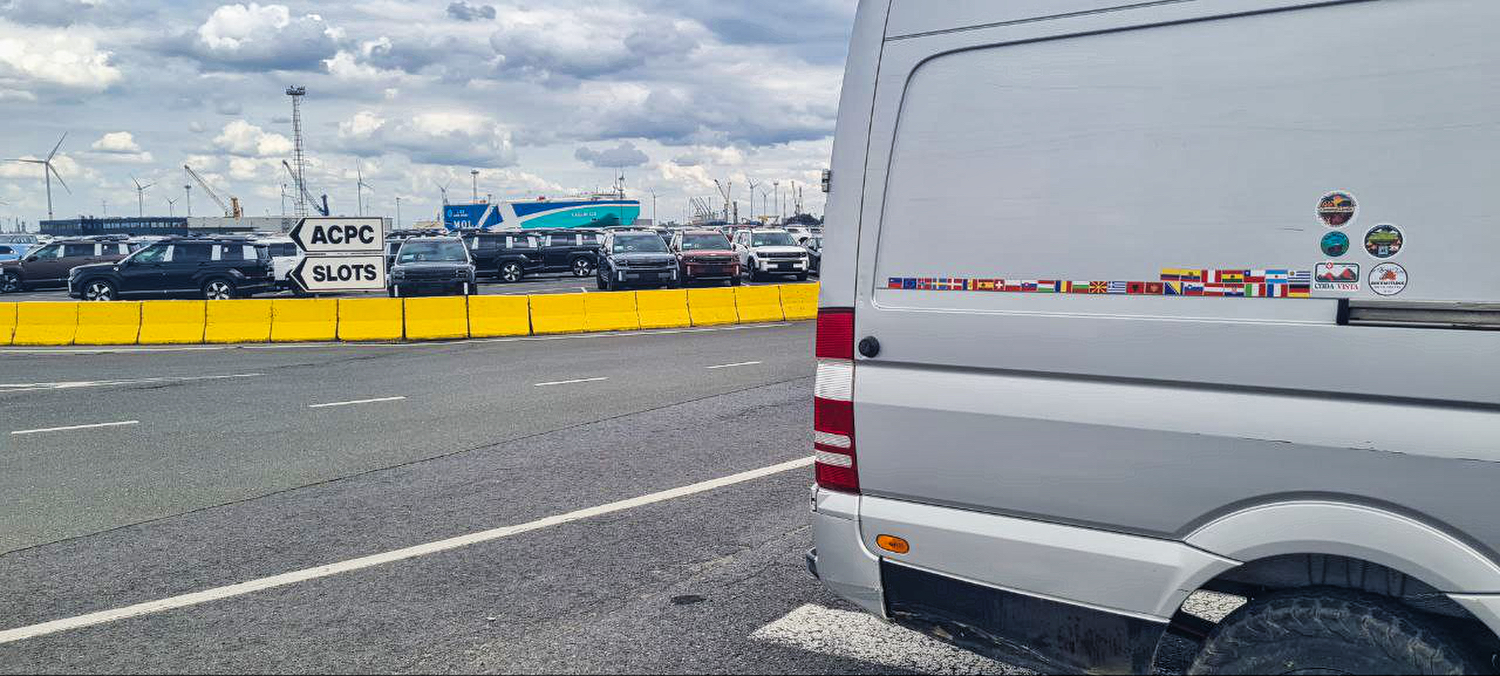
The shipper Hoegh Autoliners had disconnected the starter battery (most likely when the van was driven onto the vessel) and didn't leave any note to re-connect it nor did they do it 😒
The harbor crew just bypassed the battery and also gave me no hint. I was of the impression that I had a flat battery. When I refilled the tank that night I couldn't get the van to start again. ADAC just bypassed the battery again and told me that the battery was nearly dead. But I could drive the van back home.
The next morning when I tried to figure out what replacement battery I needed...... I spotted the real problem....
The Stage
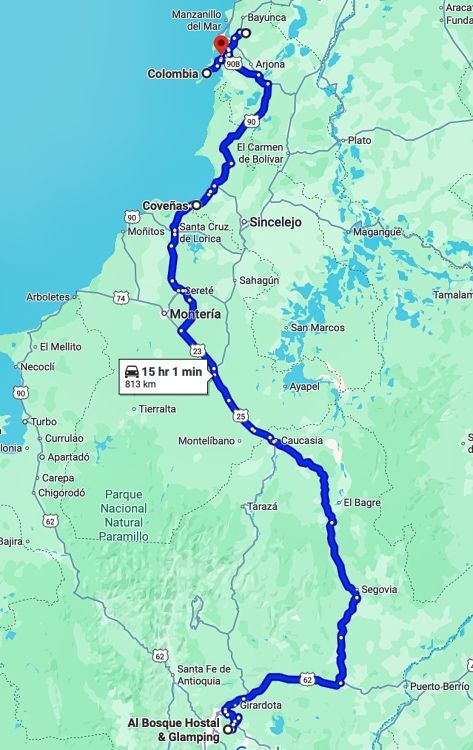
More Pictures
Videos
Latest Posts
-
 Closer to the end - South Colombia till Medellin
Closer to the end - South Colombia till Medellin -
 Ecuador - La Balsa to Tulcan
Ecuador - La Balsa to Tulcan -
 Lima to Ecuador
Lima to Ecuador -
 Lima from beginning to end
Lima from beginning to end -
 Cuzco to Lima
Cuzco to Lima -
 From Lake Titicaca to Cuzco
From Lake Titicaca to Cuzco -
 Bolivia, in search of diesel
Bolivia, in search of diesel
Post Info
Date | August 2025 |
Status | Done / Visited |
Last updated | 22 November 2025 |
Page read | 158 |